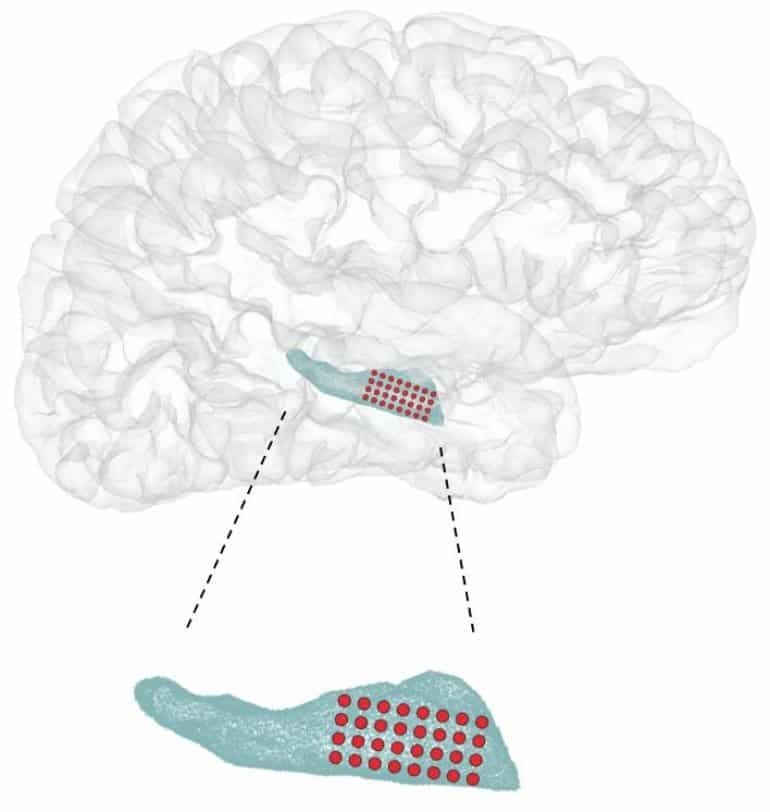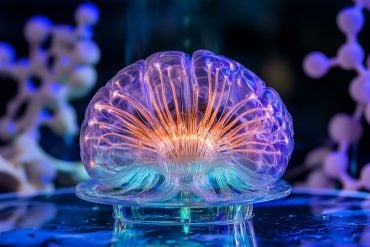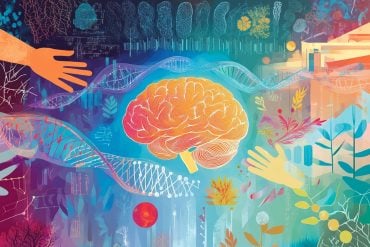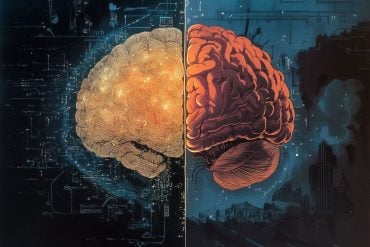Summary: A new micro-grid recording device allowed researchers to measure hippocampal activity in epileptic patients. They found brain waves travel back and forth across the brain structure, integrating messages from different areas of the brain.
Source: UCSF
Researchers at UC San Francisco have observed a new feature of neural activity in the hippocampus – the brain’s memory hub – that may explain how this vital brain region combines a diverse range of inputs into a multi-layered memories that can later be recalled.
Using a special “micro-grid” recording device developed by colleagues at Lawrence Livermore National Laboratory (LLNL), the UCSF researchers were able to measure hippocampus activity in study participants undergoing surgery to treat severe epilepsy.
They discovered that brain waves travel back and forth across this structure, integrating messages from different areas of the brain, and showed for the first time what scientists previously had only been able to hypothesize.
“Brain recordings are an important part of guiding epilepsy surgery,” said Edward Chang, MD, PhD, chair of the Department of Neurological Surgery and the senior author on the study, which appears May 12 in Nature Communications. “The new high-density electrode grid technology used here allowed us to see a novel property of hippocampal activity that was previously unknown.”
Chang specializes in treating epilepsy with brain surgery, during which the hippocampus, a long structure deep the brain within an area called the temporal lobe, is exposed and sometimes fully or partially removed. The hippocampus can be a source of seizures for people with epilepsy and is one of the first brain regions affected in Alzheimer’s disease.
Previous studies had suggested that waves of activity in the hippocampus only travel in one direction: from the back end, which encodes most of the information about physical location, to the front, which encodes most emotional information. To Jon Kleen, MD, PhD, lead author on the study and assistant professor of neurology in the Weill Institute for Neurosciences, this one-way travel wasn’t sufficient to explain how this small brain region manages to link multiple types of information to form a memory.
As an example, he said, imagine that you’ve lost your keys in Times Square. “You remember the spatial “where” aspect – Times Square – but you also remember the emotional feeling ‘Ack, I lost my keys!'” he said. To process a memory, Kleen noted, there must be some way to integrate many parts of a memory together. To accomplish this, he surmised, it would make sense for brain waves to travel via multiple routes to process information.
Customized Electrode Array Gives Two-Dimensional View of Brain Waves
In an effort to test this hypothesis, Chang and Kleen partnered with Razi Haque, Implantable Microsystems Group Lead at LLNL, to develop a device that could give a high-resolution, two-dimensional picture of neural activity. Haque helped create a device smaller than a dime, containing 32 electrodes spaced 2 mm apart in a flexible polymer that could conform to the shape of the hippocampus.
During surgery, Chang gently laid the electrode array directly on the hippocampi of six different surgical patients to monitor electrical activity while the patients rested. Using algorithms such as machine learning to analyze the data, the team found that not only do brain waves travel both up and down the hippocampus, but that the directions they move can be predicted.

The team also found that at times, waves of two different frequencies would be present at once, moving in different directions and potentially carrying different information. The finding lends new insight into how the hippocampus can integrate information coming from multiple brain areas into detailed memories.
Wave Direction Changes with Cognitive Activity
Two of the patients were awake and interacting during surgery. Kleen was able to show them photos of common objects, such as a dog, and ask them to recall the word for it. Electrode data showed that while one patient was recalling the word, cycles of activity consistently traveled from the back of the hippocampus toward the front. Seconds later, the cycles of activity changed, traveling in the opposite direction. “The direction of wave travel may be a biomarker reflecting the cognitive process the patient is engaged in at that moment,” Kleen said.
These initial observations are just the tip of the iceberg, he said. The next steps are to make observations with an even higher resolution set of electrodes and to observe neuronal activity in patients performing more complex cognitive tasks. Ultimately, he hopes the information gained could lead to treatments using deep brain stimulation to enhance the neurostimulator therapies that are showing great success in epilepsy.
“The goal of this research is to accelerate our understanding of how the hippocampus works, so that we can address the damage to it that we see in patients with epilepsy and Alzheimer’s disease,” Kleen said. “If we find that, in some patients, the waves don’t travel in the proper way, we can design more sophisticated stimulation patterns that may be more effective at preventing seizures or restoring cognition.”
Co-authors on the paper include Jason Chung and Kristin Sellers, PhD, from UCSF, as well as additional researchers from LLNL. The project was funded by NINDS grants R25NS070680 and K23NS110920 (J.K.); R01-DC012379, R00-NS065120, and partially funded by DARPA grant DP2-OD00862. For additional authors and funding, please see the paper.
About this neuroscience research news
Source: UCSF
Contact: Robin Marks – UCSF
Image: The image is credited to UCSF
Original Research: Open access.
“Bidirectional propagation of low frequency oscillations over the human hippocampal surface” by Jonathan K. Kleen, Jason E. Chung, Kristin K. Sellers, Jenny Zhou, Michael Triplett, Kye Lee, Angela Tooker, Razi Haque & Edward F. Chang. Nature Communications
Abstract
Bidirectional propagation of low frequency oscillations over the human hippocampal surface
The hippocampus is diversely interconnected with other brain systems along its axis. Cycles of theta-frequency activity are believed to propagate from the septal to temporal pole, yet it is unclear how this one-way route supports the flexible cognitive capacities of this structure.
We leveraged novel thin-film microgrid arrays conformed to the human hippocampal surface to track neural activity two-dimensionally in vivo.
All oscillation frequencies identified between 1–15 Hz propagated across the tissue. Moreover, they dynamically shifted between two roughly opposite directions oblique to the long axis.
This predominant propagation axis was mirrored across participants, hemispheres, and consciousness states. Directionality was modulated in a participant who performed a behavioral task, and it could be predicted by wave amplitude topography over the hippocampal surface.
Our results show that propagation directions may thus represent distinct meso-scale network computations, operating along versatile spatiotemporal processing routes across the hippocampal body.






